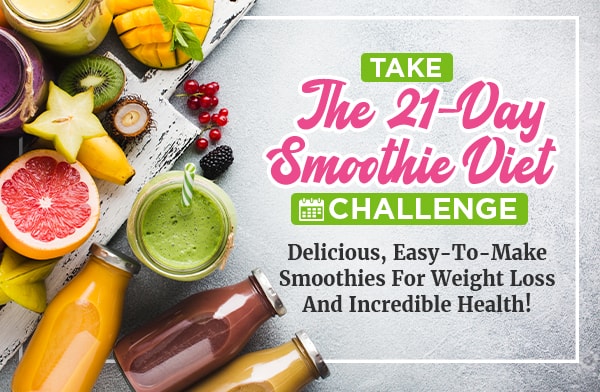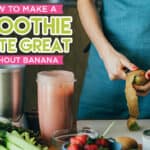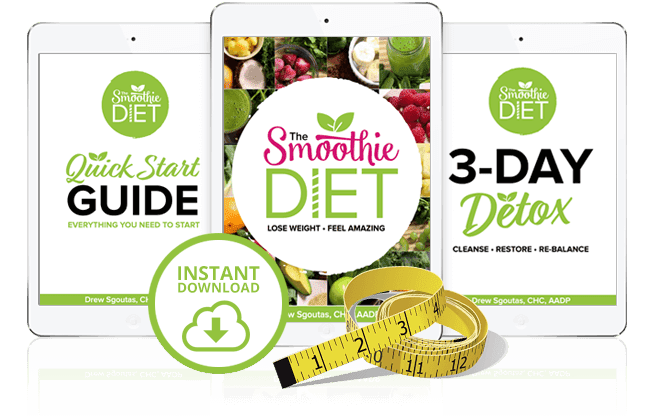Which Healthy Veggies Don’t Have a Taste in Smoothies?
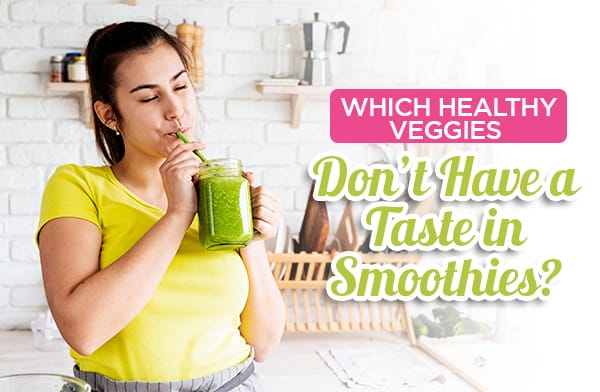
When we think of making a smoothie, we typically envision a yummy-looking pink, red, orange, or yellow smoothie. For most of us, our natural sugar inclinations run more to the sweetness of fruit and less to the greenness of veggies.
That is, until you’ve trained your tastebuds to enjoy healthy smoothies bursting with greens and good fats. We all want to get there, but sometimes a strong-tasting vegetable can cause our faces to scrunch up as we swallow the drink. I’m talking to you, green kale.
When it comes to creating a healthy smoothie, one of the most important ingredients you can add to a smoothie is fiber. Fiber has all kinds of goodness to contribute — it helps regulate your digestion, absorbs water and keeps it in your gut to help you stay hydrated longer, and it helps keep you regular. It also helps to suppress your appetite as the day goes on. That’s a lot of good outcomes built into this little five-letter word!
And while every good smoothie needs plenty of fiber, not all fibers are created equal. For example, fruit has fiber but also lots of sugar. Superfoods have fiber, along with a lot of protein and fat.
The best fiber option, by far, is the kind you get from greens. Veggies. Full circle back to making the healthiest smoothies while still loving the taste. But not to fear, not all veggies have as strong a taste as the sometimes dreaded kale.
Keep reading for a list of healthy vegetables that don’t have a taste when you add them to your smoothie recipe.
1. Cauliflower
How it’s good for you: Cauliflower contains a rich supply of health-promoting phytochemicals, especially protective antioxidants, and anti-inflammatory compounds. It supports digestion and liver detoxification and is a rich source of vitamin C, magnesium, potassium, vitamin B6 and fiber.
What you should know about it: Frozen cauliflower increases the creaminess of a smoothie. Like other cruciferous veggies, it takes on the flavors of the ingredients and spices it’s paired with.
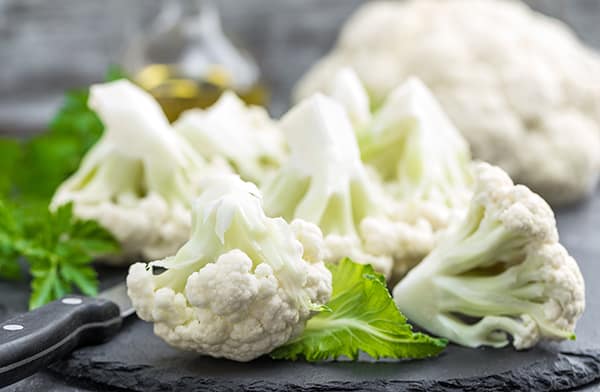
Recipe recommendations: Peanut Butter Fingers posted this Strawberry Banana Hidden Cauliflower Smoothie recipe that promises you’ll drink this smoothie without noticing even a hint of cauliflower. The trick is to add frozen cauliflower to the smoothie mixture.
Over at Healthy Kitchen, this recipe for a Cinnamon Bun Cauliflower Smoothie is sure to please. It also uses raw frozen cauliflower with a bit of peanut butter and a little protein powder in the mix. The sweetness comes from one Medjool date and five drops of pure stevia. Again, you’re guaranteed you won’t taste the cauliflower.
2. Avocados
Before your fingers start twitching to let me know that avocados are technically a fruit, I do already know. But as it doesn’t add any sweetness, I’m allowing it to be part of my veggies list.
How they’re good for you: Avocados are bursting with goodness, some of which I’m listing here. They are a source of vitamins C, E, K, and B6 and riboflavin, niacin, folate, pantothenic acid, magnesium, and potassium. They also provide lutein (great for your vision), beta carotene, and omega-3 fatty acids.
What you should know about them: Avocados contain high levels of healthy, beneficial fats, which can help you feel fuller between meals.
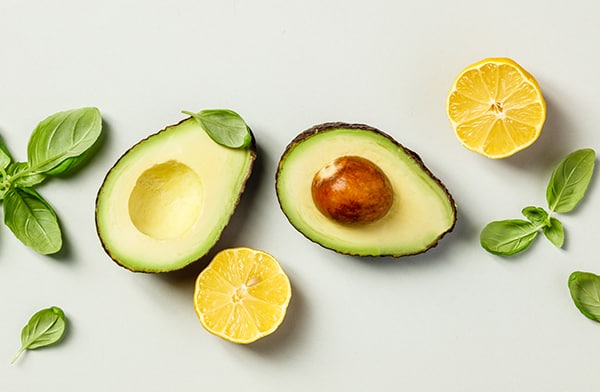
Recipe recommendations: There are a bunch of smoothie recipes out there that feature the yumminess of avocados, but this Avocado Smoothie with Blueberries deserves five stars. It’s not just great-tasting, but it’s packed with nutrition and is fully satisfying.
Big Man’s World’s smoothie recipe needs just three ingredients and is keto-friendly, guaranteed to keep you satisfied for hours. Simply called Avocado Smoothie, it takes minutes to make and produces four cups’ worth of smoothies.
3. Spinach
How it’s good for you: Spinach is rich in many nutrients, including Vitamin A, Vitamin C, Vitamin K, iron, folate, and potassium. It’s also rich in oxalate, a naturally occurring substance found in almost all plants.
What you should know about it: Spinach is chock full of fiber. Overeating fiber can cause gas, cramping, and abdominal pain. So don’t overeat spinach but know that it tops the chart as one of the most nutrient-dense vegetables.
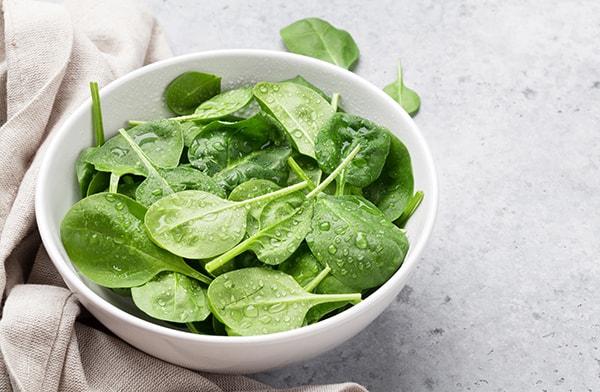
Recipe recommendation: If you’re ready to start a spring cleanse, this Detox Spinach Green Smoothie is a great way to begin. It’s effortless to make, very healthy, and you can’t even taste the spinach in this smoothie. Use delicate baby spinach if you need the mildest flavors or regular spinach if you’re already accustomed to adding this leafy green to your smoothies.
4. Cucumbers
How they’re good for you: Cucumbers are packed with healing nutrients, including vitamins A, C, and K, magnesium, potassium, manganese, iron, and calcium. They are rich in phytonutrients such as flavonoids, lignans, and triterpenes and have natural antioxidant and anti-inflammatory properties.
What you should know about them: There are just 16 calories in a cup of cucumber with its peel on (15 once the peel is removed). Adding a cup of cucumbers to your breakfast smoothie will give you about 4% of your daily potassium, 3% of your daily fiber, and 4% of your daily vitamin C requirements.
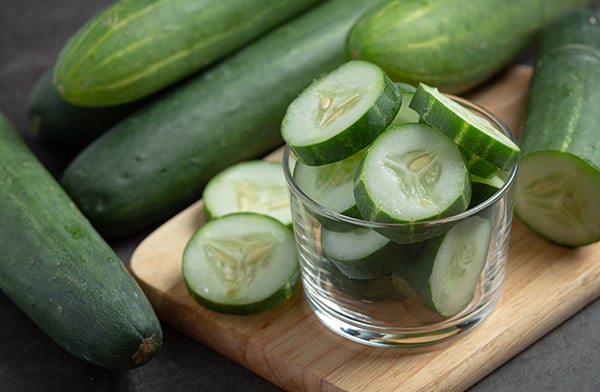
Recipe recommendation: Over at the Minimalist Baker, this Creamy Pineapple Cucumber Smoothie uses just six ingredients and takes only five minutes to make. The cucumbers are 95% water and help to detoxify your body naturally.
5. Zucchini
How it’s good for you: Zucchini contains zero fat and is high in water and fiber. It also contains significant amounts of vitamins B6, riboflavin, folate, C, and K, and minerals, like potassium and manganese. This summer squash also contains antioxidant and anti-inflammatory phytonutrients.
What you should know about it: Zucchini is practically tasteless and doesn’t require any stronger flavors to help hide its taste. It also doesn’t change the color of your smoothie, so it’s perfect for young ones who get squirrely at the idea of drinking green.
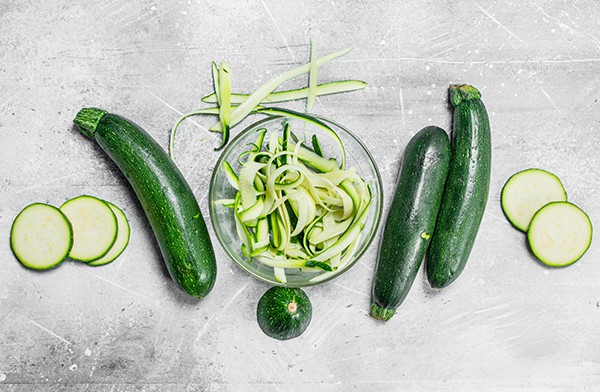
Recipe recommendation: When you combine zucchini with the ingredients in this Coconut Chocolate Zucchini Smoothie (with sneaky vegetables), it promises to taste like an Almond Joy chocolate bar while packing in protein and healthy fats.
6. Cabbage
How it’s good for you: Cabbage is rich in vitamin B6 and folate and is especially high in vitamin C. It contains powerful antioxidants, including polyphenols and sulfur compounds. Also high in fiber, it contains small amounts of other micronutrients, including vitamin A, iron, and riboflavin.
What you should know about it: You get different nutrients from your cabbage depending on whether you cook, ferment or eat it raw. Raw red cabbage gives you the best nutritional boost per serving.
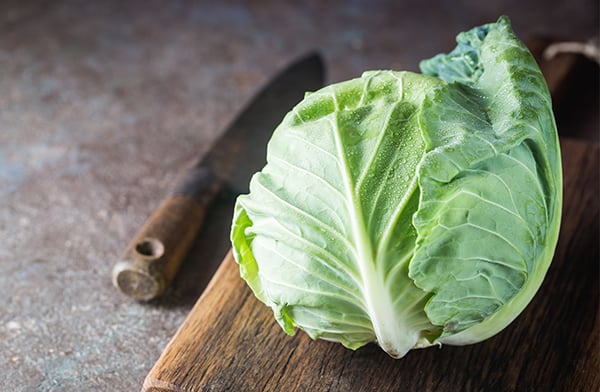
Recipe recommendation: I found this recipe for a cabbage smoothie in the healthy section of The New York Times. If you’re skeptical about putting cabbage in a smoothie, this Red Berry, Cabbage, and Almond Smoothie may change your mind. The OJ, mixed berries, honey, cinnamon, and almond extract combine together in a healthy and delicious drink.
7. Beetroot
How it’s good for you: Packed with essential nutrients, beetroots are a great source of fiber, folate (vitamin B9), manganese, potassium, iron, and vitamin C. Beetroots and beetroot juice have been associated with numerous health benefits, including improved blood flow, lower blood pressure, and increased exercise performance.
What you should know about it: Beetroot is considered a superfood, as it’s nutrient-rich and contains an above-average amount of vitamins and minerals per gram. When adding raw beetroot to a smoothie, you need to peel it first and make sure your machine’s motor is powerful enough to blend it. Alternately you can lightly steam or boil beet chunks until they are tender and easier on your blender blades.
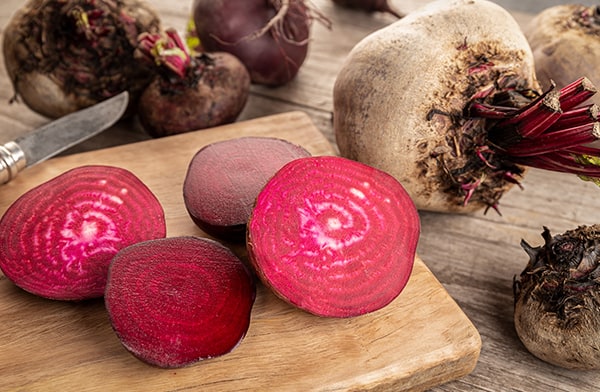
Recipe recommendation: Beets are not a vegetable you usually think of when you’re looking for a smoothie recipe. This site suggests you try their Beet Smoothie Recipe even if you don’t think you like beets. The natural sweetness of beets pairs with blueberries, pineapple, Greek yogurt, and a little honey in this taste sensation.
8. Sweet Potato
How it’s good for you: Sweet potatoes are rich in beta carotene, an antioxidant that’s very effective at raising blood levels of vitamin A. In addition, it’s relatively high in both soluble and insoluble fibers. Soluble fibers reduce blood sugar spikes, while insoluble fibers help reduce the risk of diabetes and improve gut health.
What you should know about it: Sweet potatoes can be added to smoothies in either their raw or cooked state. Just know that a strong machine motor is needed to process the potato thoroughly if you add them raw. Pre-boiled sweet potatoes retain more beta-carotene and make the nutrients more absorbable.
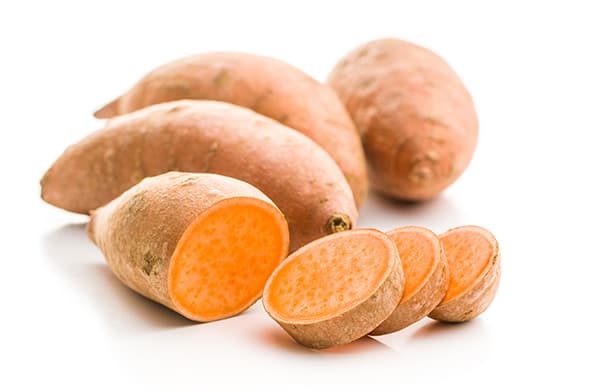
Recipe recommendation: This one had me at Cinnamon Sweet Potato Pie Smoothie. It tastes like a slice of sweet potato pie married to a thick, creamy milkshake, and this smoothie is the result. And with over 18 grams of protein, 7 grams of fiber, and 9 grams of heart-healthy fats, you’ll know you’re doing something good for your body.
9. Carrots
How they’re good for you: The fiber in carrots can help keep blood sugar levels under control. And they’re loaded with vitamin A and beta-carotene, which there’s evidence to suggest can lower your diabetes risk. They can also strengthen your bones. Carrots have calcium and vitamin K, which are important for bone health.
What you should know about them: These days, most blenders can handle a raw carrot or two. As a rule of thumb, our blenders can process anything our teeth can chew. Chopping them up a bit will make it that much easier on your blender’s motor.
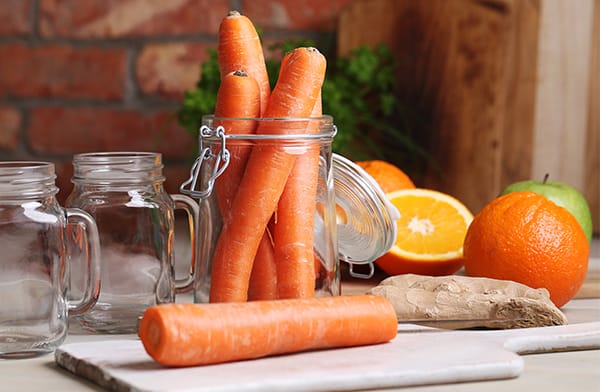
Recipe recommendation: The carrots in this Carrot Ginger Turmeric Smoothie need to be juiced first before adding them to the other ingredients. Make carrot juice by adding carrots and filtered water to a high-speed blender and blending until completely pureed and smooth. Set the pulp aside to use in baked goods.
10. Chickpeas
How they’re good for you: Chickpeas are a particularly good source of vitamin B9 and vitamin B6. They’re also rich in fiber and plant-based protein, which work together to slow digestion and help promote a feeling of fullness. In addition, chickpeas are a great source of magnesium and potassium, two minerals that support a healthy heart.
What you should know about them: Chickpeas are also known as garbanzo beans and have been a staple in Middle Eastern cuisine for thousands of years. They have a slightly nutty taste which pairs well with other smoothie ingredients.
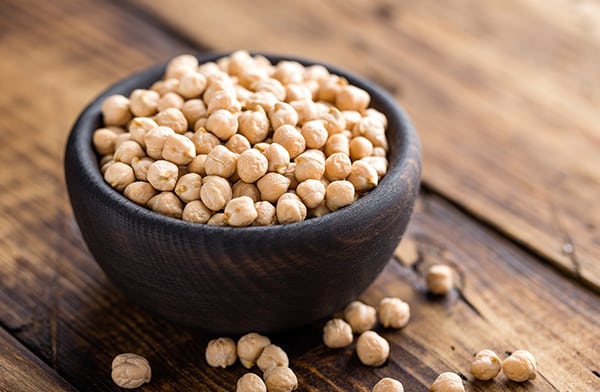
Recipe recommendation: My mouth is watering reading the ingredients in this Peanut Butter Banana Chickpea Shake! The sweetness comes from Medjool dates, the nutty flavor comes from the peanut butter (or other nut butter), and the protein punch comes from the chickpeas.
11. Black Beans
How they’re good for you: Black beans are a good source of iron, thiamin, folate, manganese, magnesium, as well as phytonutrients. Canned black beans tend to be high in sodium but draining and rinsing the beans reduces the sodium by 41%.
What you should know about them: Black beans add a wonderful creamy texture to your smoothie. They’re easy to find and an inexpensive way to add plant-based proteins to your diet. While they’re high in carbs, they come in the form of resistant starch and fiber, which are digested slowly.
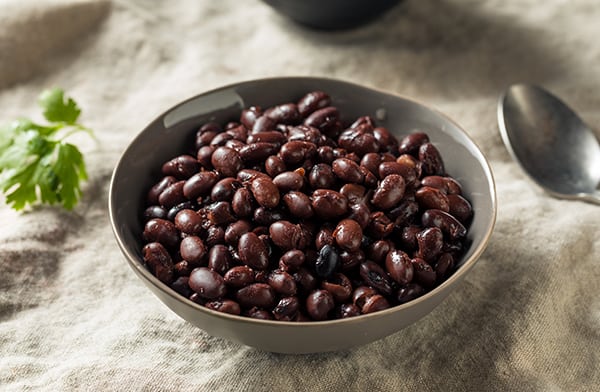
Recipe recommendation: Before you pass judgment on combining black beans with chocolate in this Chocolate Black Bean Smoothie, remember that all these recipes promise you won’t taste the vegetables. This one is no different. Not only will you not taste the black beans, but you also won’t even know there’s frozen cauliflower in the recipe!
12. Lentils
How they’re good for you: Lentils are an excellent source of B vitamins, iron, magnesium, potassium, and zinc. They’re also a great source of plant-based protein and are made up of more than 25% protein. Super high in fiber, they support regular bowel movements and the growth of healthy gut bacteria.
What you should know about them: Don’t use uncooked lentils in your smoothies or anywhere else. Like other legumes, raw lentils contain a type of protein that binds to your digestive tract—the unpleasant toxic reaction results in vomiting and diarrhea. Instead, stick to canned lentils or boil up the raw beans on your stovetop.
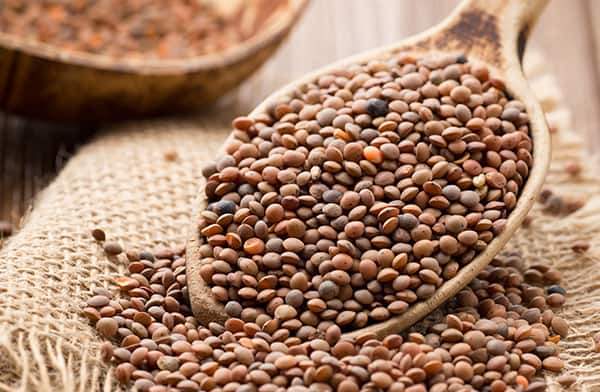
Recipe recommendation: Blended with protein-packed lentils, green apples, and spinach, this Green Apple Lentil Smoothie gets its flavor from the hit of maple syrup, grated ginger, ground cinnamon, and optional matcha.
13. White Beans
How they’re good for you: White beans are a nutritional powerhouse, as they’re packed with fiber and protein and a good source of numerous micronutrients, including folate, magnesium, and vitamin B6.
What you should know about them: Just like other beans in the bean family, white beans have a mild flavor that’s easy to mask with more dominant ingredients like fruit or cocoa. As a result, you get the addition of a smooth, creamy texture in your drink, and they’re loaded with protein and fiber.
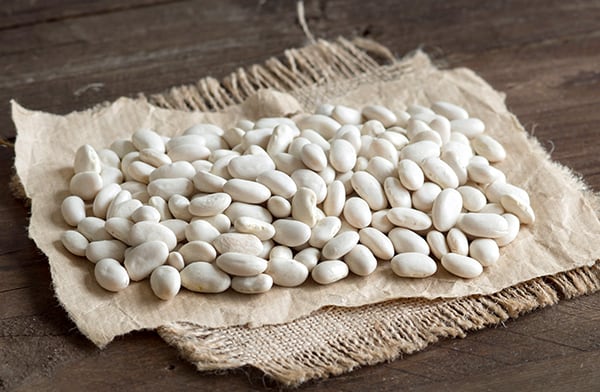
Recipe recommendation: This creatively named White Bean Smoothie may seem odd to add to your morning smoothie rotation, but it’s smooth, creamy, and good for your heart. The addition of a little nut butter helps to keep you full until your next planned meal.
I’m as surprised as anyone with this list of 13 healthy veggies that don’t have a taste in smoothies. I love the focus on veggies, and I really love knowing that we don’t have to compromise our taste buds when loading our bodies with healthy ingredients.
If you want more smoothie recipes and lots of great advice, check out The Smoothie Diet. It’s got recipes and recommendations and some of the best ideas in the smoothie world.
Let me know what you think of the recipes in this blog post! Or, if you have any other smoothie recipes that include veggies without killing the taste, let me know! I’d be happy to add them to the list here — more veggie goodness is always better.
